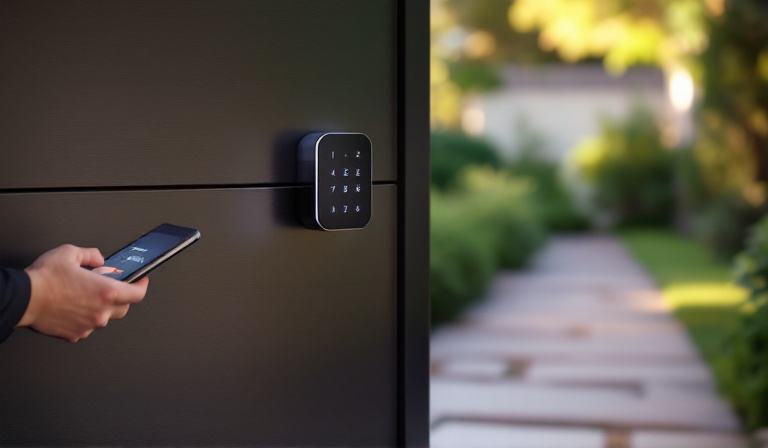
In an era where convenience and security are paramount, keyless entry systems have emerged as a revolutionary solution. Gone are the days of fumbling for keys at your doorstep; today, these systems offer a seamless and secure method of accessing your home, car, or office. But what exactly are the advantages of keyless entry systems, and how can they enhance your daily life? In this comprehensive guide, we’ll delve into the numerous benefits of these innovative systems and provide practical tips for integrating them into your lifestyle.
Understanding Keyless Entry Systems
Keyless entry systems allow you to unlock doors without the need for a traditional key. These systems use various technologies, such as keypads, smartphone apps, or biometric data like fingerprints, to grant access. By eliminating the need for physical keys, they offer a more streamlined and secure way to manage entry to your premises.
Advantages of Keyless Entry Systems
1. Enhanced Security
One of the most significant advantages of keyless entry systems is the enhanced security they provide. Traditional keys can be lost, stolen, or copied, posing a security risk. Keyless systems eliminate these vulnerabilities by using unique codes, biometric data, or encrypted digital keys, which are much harder to replicate or steal.
2. Convenience and Accessibility
No more jingling keys or searching through your bag at the door. Keyless systems offer the convenience of quick access, whether you’re entering your home, car, or office. Many systems can be operated remotely via smartphone apps, allowing you to unlock your door from a distance, which is especially useful when your hands are full or you’re expecting visitors.
3. Customizable Access
With keyless entry systems, you can easily customize who has access to your property. For instance, you can provide temporary access codes to guests or service personnel, which can be deactivated once they’re no longer needed. This feature is particularly beneficial for rental properties or shared spaces.
4. Monitoring and Control
Many keyless entry systems offer advanced monitoring features, giving you insights into who enters and exits your property and when. This can be invaluable for both security and management purposes, allowing you to track access in real-time and review history logs if needed.
5. Cost-Effective in the Long Run
While the initial investment in keyless entry systems can be higher than traditional locks, the long-term savings can be substantial. You’ll save on costs associated with rekeying locks or replacing lost keys. Furthermore, the enhanced security can reduce the likelihood of theft or unauthorized access, potentially lowering insurance premiums.
Types of Keyless Entry Systems
Understanding the different types of keyless entry systems can help you choose the best option for your needs. Here are some common types:
- Keypad Locks: These systems require a numeric code to unlock. They are simple to install and use, making them a popular choice for homes and offices.
- Biometric Locks: Utilizing fingerprints or facial recognition, these systems offer high security and are often used in sensitive areas.
- Smartphone-Enabled Systems: These systems allow you to lock and unlock doors using an app on your smartphone, providing flexibility and remote access capabilities.
- RFID Locks: Using radio-frequency identification, these locks require a card or fob to unlock. They are commonly found in hotels and corporate offices.
Tips for Choosing a Keyless Entry System
When selecting a keyless entry system, consider the following factors to ensure you make the right choice:
- Security Features: Look for systems with advanced encryption and security measures to protect against hacking and unauthorized access.
- Ease of Use: Choose a system that is user-friendly, with intuitive interfaces and simple installation processes.
- Compatibility: Ensure the system is compatible with your existing doors and hardware, or be prepared to make necessary adjustments.
- Power Source: Consider the power requirements of the system, whether it runs on batteries or needs to be hardwired.
- Budget: Balance the cost with the features offered, and consider long-term savings and benefits.
Integrating Keyless Entry Systems into Your Life
Once you’ve selected the right system, integrating it into your daily routine is the next step. Here are some practical ways to maximize the benefits of your keyless entry system:
- Regular Updates: If your system operates via software, ensure it is regularly updated to protect against vulnerabilities.
- Backup Options: Keep a backup method of entry, such as a physical key or an alternative code, in case of system failure or power outage.
- Training: Familiarize all users with the operation of the system and any emergency procedures.
- Routine Maintenance: Regularly check the system for any signs of wear or damage, and replace batteries as needed to ensure continuous operation.
Conclusion
Keyless entry systems are transforming the way we think about security and convenience. By understanding the advantages and integrating these systems into your home or business, you can enjoy enhanced peace of mind and streamlined access control. Whether you’re upgrading your existing security measures or starting fresh, keyless entry systems offer a modern solution to meet your needs.

